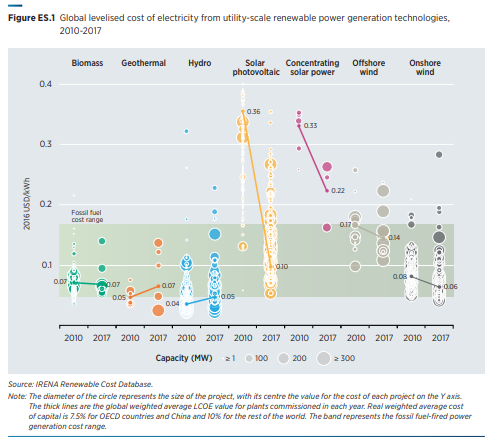IRENA Report shows renewables are increasingly competitive
The International Renewable Energy Agency (IRENA) has recently launch the Renewable Power Generation Costs in 2017, a report that demonstrates renewable energy has emerged as an increasingly competitive way to meet new power generation needs. The document describes the latest trends for each of the main renewable power technologies, based on the latest cost and auction price data from projects around the world.
The results are clear and show Renewable power generation costs continue to fall and are already very competitive to meet needs for new capacity.
The competitive procurement, where auctions are included, still account for a small fraction of global renewable energy deployment, although they contribute significantly for driving down costs in new markets. The report also finds that global competition is helping to spread the best project development practices, reducing technology and project risk and making renewables more cost-competitive than ever before.
Solar power in developed countries has become cheaper than new nuclear power and the levelised cost of electricity (LCOE) from solar photovoltaics (PV) decreased by 69% between 2010 and 2016, coming well into the cost range of fossil fuels. The Solar PV module costs have fallen by about four-fifths, making residential solar PV systems as much as two-thirds cheaper than in 2010.
Onshore wind, whose costs fell 18% between 2010 and 2016, provides very competitive electricity, with projects at USD 0.04/kWh. As installation accelerates, the cost equation for renewables just gets better and better. With every doubling of cumulative installed capacity for onshore wind, investment costs drop by 9% while the resulting electricity becomes 15% cheaper.
The IRENA Renewable Cost Database includes 15000 data points for LCOE from projects around the globe, representing over 1000 gigawats (GW) of power generation capacity. An additional auctions database encompasses over 7,000 projects with nearly 300 GW of capacity.
Source and Image © IRENA

